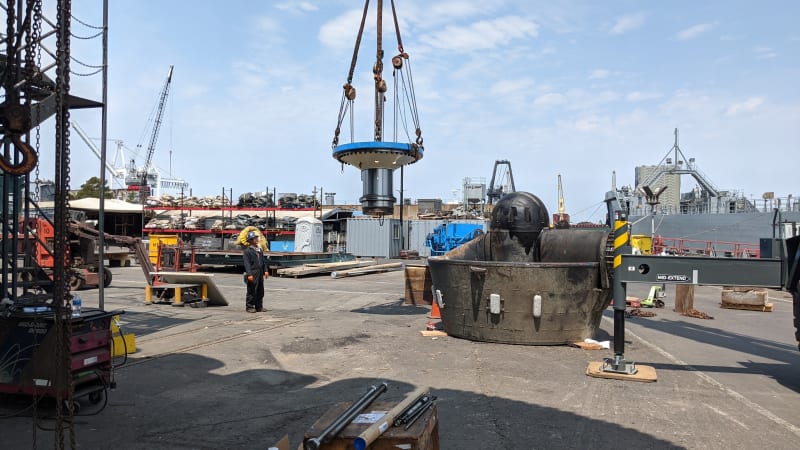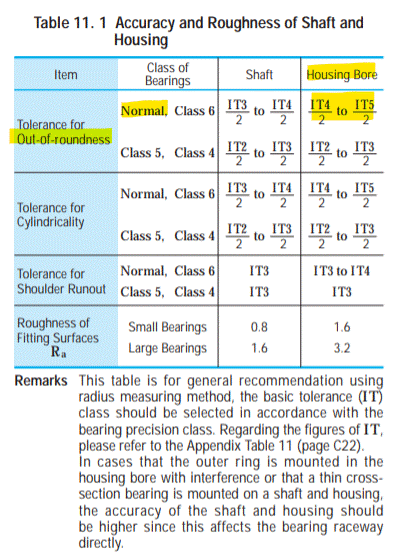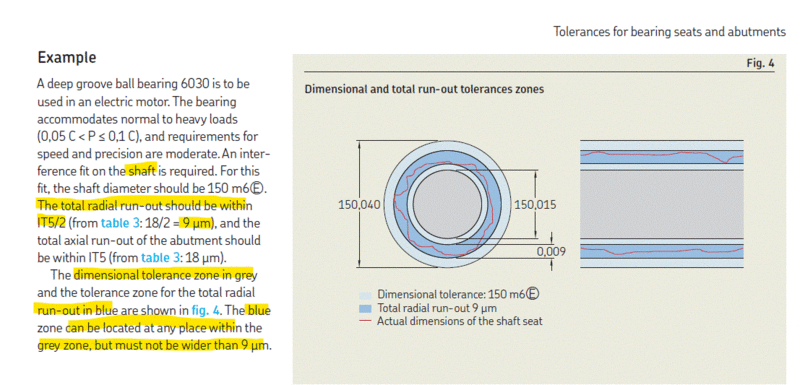TugboatEng
Marine/Ocean
I'm looking for some thoughts on bearing housing roundness. I have a cylindrical roller bearing that a housing fit tolerance of 0.001-0.009" and my housing measures at 0.004-0.013.
Follow along with the video below to see how to install our site as a web app on your home screen.
Note: This feature may not be available in some browsers.
skf said:Dimensional, form and running accuracy requirements
The accuracy of cylindrical bearing seats on shafts and in housing bores should correspond to the accuracy of the bearings used. SKF recommends the following guidelines for form and running accuracy when machining seats and abutments.
Dimensional accuracy
For bearings made to Normal tolerances, the dimensional accuracy of cylindrical seats on the shaft should be at least tolerance grade IT6. The
dimensional accuracy of the housing should be at least tolerance grade IT7
page 386 is confusing to me.Tolerances for cylindrical form
The cylindricity tolerance t1 of a bearing seat should be one to two IT tolerance grades better than the prescribed dimensional tolerance, depending on the requirements. For example, if a bearing seat on a shaft has been machined to tolerance class m6, then the accuracy of form should be tolerance grade IT5 or IT4. The tolerance value t1 for cylindricity is obtained for an assumed shaft diameter of 150 mm from t1 = IT5/2 = 18/2 = 9 μm. However, the
tolerance t1 is for a radius, therefore 2 ¥ t1 applies for the shaft diameter. Guideline values for the cylindrical form tolerance t1 (and the total runout tolerance t3) for bearing seats are provided in Appendix D-1, on page 386.


Pete said:In the absense of any guidance, one interpretation would be that every housing bore measurement taken only needs to individually falls within tolerance (example H6), but it doesn't matter how far the housing measurements differ from each other
SKF said:shaft seats to grade IT6 dimensional tolerances and grade IT5 total run-out tolerances
housing seats to grade IT7 dimensional tolerances and grade IT6 total run-out tolerances

electricpete said:The example is for a shaft fit of m6 which is the familiar type of fit table tolerance we deal with ....but they're also calling it dimensional tolerance... how are these two things m6 and IT6 related? I know in m6 the letter m is related to clearance/interference and the number 6 is the tolerance part but I'm not sure if that 6 is necessarily IT6. I'll think about that.

